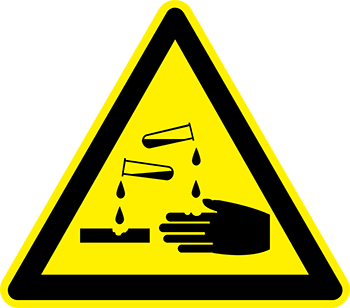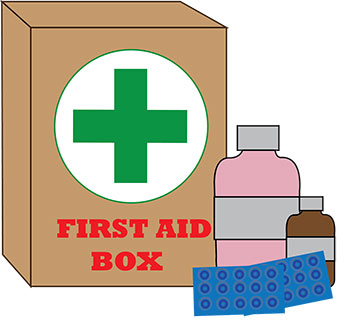Cream chargers are indispensable tools for making whipped cream. However, their benefits come with responsibilities. Ensuring the safe handling, storage, and disposal of cream chargers is important in maintaining a safe working environment. We are here to guide you on the safe usage of cream chargers. We’ll provide safety tips for using cream chargers. You will learn about the responsible and effective use of nitrous oxide canisters as well as first aid instructions in case of an accident.
Understanding Cream Chargers

Cream chargers contain nitrous oxide, a colourless, non-flammable gas commonly used as a propellant. N2O is released when the charger is punctured in a cream dispenser and this aerates the cream to create whipped cream.
Each charger typically holds 8 grams of N2O. However, extra-large canisters (up to 640 grams) are becoming quite popular lately because of their newfound use in mixology and other culinary applications.
Is Nitrous Oxide Dangerous?
Nitrous oxide is safe when used correctly but can pose risks if misused. Inhalation of large amounts can lead to dizziness, loss of consciousness, and long-term neurological damage. It’s crucial to use nitrous oxide only as intended.
How Do Cream Chargers Work?
When a cream charger is inserted into a compatible dispenser and punctured, the nitrous oxide gas is released into the cream. The gas dissolves into the fat in the cream, creating pressure that whips the cream into a light, airy texture when dispensed.
Tips on the Proper Handling of Cream Chargers
Read and Follow Manufacturer Instructions
Proper handling of cream chargers begins with reading and following the manufacturer’s instructions. These guidelines are tailored to ensure the safe and efficient use of the product. The instructions typically cover critical aspects such as the correct way to insert the charger into the dispenser, recommended shaking techniques, and the amount of cream to use for optimal results. Following these steps prevents mishandling that could lead to leaks, malfunctions, or potential injuries.
Additionally, manufacturers provide specific warnings about what not to do, such as over-tightening the charger or using damaged canisters. Adhering to these precautions ensures that you use the cream chargers safely, maximising their effectiveness while minimising risks. Always keep the instructions handy for quick reference and update your knowledge with any changes or updates from the manufacturer.
Inspecting Chargers Before Use for Damages or Defects
Inspect cream chargers for damages or defects before use. You can do this by examining the canister for any signs of physical damage, Look for dents, cracks, rust, or other irregularities. These imperfections can compromise the integrity of the charger, leading to gas leaks or malfunction during use. Pay close attention to the seal at the end of the charger, as any disruption here can prevent a proper seal when punctured, potentially causing nitrous oxide to escape prematurely. If any damage is detected, do not use the charger. Instead, dispose of it according to local regulations and replace it with a new one. Taking a few moments to conduct this inspection can prevent accidents and ensure safe and efficient operation of your cream dispenser.
How to Prevent Nitrous Oxide Abuse?
To prevent nitrous oxide abuse, you need to secure and control access to the cream chargers. Store the chargers in a locked cabinet or a secure storeroom accessible only to authorized personnel. Implement strict inventory management practices. Regular monitoring of stock levels and logging usage to quickly identify any discrepancies is necessary. Educate all staff members about the potential dangers and legal consequences of nitrous oxide misuse. Make sure all staff understand the importance of using these tools responsibly.
In addition to secure storage and education, establish clear usage policies and enforce them consistently. Restrict access to nitrous oxide chargers to employees who need them for their work. Maintain supervision in areas where chargers are used. If deemed necessary, consider installing surveillance cameras to deter misuse. By combining secure storage, staff education, and strict policies, you can reduce the risk of nitrous oxide abuse in your café or kitchen.
Is There a Risk of a Cream Charger Canister Exploding?
While the risk of a cream charger canister exploding is low, it is not entirely negligible. Explosions can occur if the canister is exposed to extreme heat, physical damage, or if it is not used properly. Nitrous oxide is stored under high pressure within the canister, and any compromise to its structural integrity can lead to a sudden release of this pressure, potentially causing an explosion.
Handle cream chargers with care. Avoid dropping or puncturing them. Keep them away from direct sunlight and other sources of heat. Never attempt to tamper with or modify the canisters. Insert the charger into the dispenser according to the instructions and ensure a secure
What Happens if You Accidentally Drop a N2O Canister?

Accidentally dropping a nitrous oxide (N2O) canister can compromise its integrity, although most canisters are designed to withstand minor impacts. If a canister is dropped, the first step is to inspect it for any visible signs of damage such as dents, cracks, or leaks. A damaged canister may not function correctly and could pose safety risks, such as leaking gas or, in extreme cases, the risk of explosion if the structural integrity is compromised.
If the canister shows no visible damage, it is likely safe to use, but continue to handle it with care. If you detect any hissing sounds, unusual odors, or visible gas escaping, do not use the canister. Instead, place it in a secure, well-ventilated area away from any sources of ignition and dispose of it following local regulations. Always err on the side of caution and prioritize safety to prevent any potential hazards associated with compromised N2O canisters.
What to Do If N2O Canister is Accidentally Punctured?
If a nitrous oxide (N2O) canister is accidentally punctured, you should act swiftly and with care. First, ensure that the area is well-ventilated by opening windows and doors to disperse the gas. Avoid direct contact with the canister as the escaping gas can be extremely cold and can cause frostbite within seconds. Do not attempt to repair the puncture or stop the leak manually. Instead, move away from the immediate area to prevent inhaling the gas, and ensure there are no open flames or sparks nearby.
Once the gas has dispersed and it is safe to approach the canister, carefully secure it in a container to prevent further leaks and follow local regulations for its disposal. If anyone has inhaled the gas and is experiencing symptoms like dizziness or shortness of breath, move them to an open area with fresh air.
How to Store Cream Chargers?
Maintaining the canister’s safety and effectiveness also depends on how it is stored. The chargers should be stored in a cool, dry place away from direct sunlight and heat sources. Exposure to high temperatures can increase the internal pressure and potentially cause the canisters to rupture. The ideal storage temperature for cream chargers is between 0°C and 50°C (32°F to 122°F). Additionally, keep the chargers in their original packaging until ready for use. The original packaging protects them from physical damage and contamination.
Always store them out of reach of children and pets to prevent accidents. For added security, consider using a locked cabinet or storeroom, especially in environments where access should be restricted to authorised personnel. By following these storage guidelines, you can ensure the longevity and safe use of your cream chargers.
Using Cream Chargers Safely
Here are some general steps for safely attaching a charger to a dispenser.
- Prepare the Dispenser: Ensure that the cream dispenser is clean and dry. Also, check for dents, rust or leaks. Remove the head of the dispenser and fill it with the desired amount of cream, ensuring not to overfill it as this can affect the whipping process.
- Insert the Charger: Place the charger into the holder. Make sure the narrow end of the charger is facing downwards. Attach the holder to the dispenser head, being careful to screw it on straight and securely. You will hear a hiss as the charger is punctured and the gas is released into the dispenser.
- Shake the Dispenser: Once the charger is attached and the gas has been released, shake the dispenser. This helps the nitrous oxide to dissolve into the cream, creating the pressure needed to whip the cream effectively.
- Dispense the Cream: After shaking, test the dispenser by pressing the lever to release a small amount of cream. If it’s not dispensing correctly, give it a few more shakes. Hold the dispenser with the nozzle pointing downwards for the best results.
- Replace the Charger: If the cream stops dispensing before the container is empty, you may need to replace the charger. Follow the same steps to attach a new charger and continue.
Note: You can refer to the instructions in the packaging for information on how to use the specific brand of cream charger that you have. Also, operate the cream dispenser in a well-ventilated area to avoid inhaling any gas that may escape during use.
First Aid if You Accidentally Inhale Nitrous Oxide

If you accidentally inhale nitrous oxide, the first step is to move immediately to an area with fresh air. Breathing deeply in a well-ventilated space will help clear the gas from your lungs and alleviate symptoms such as dizziness or shortness of breath. Sit down to avoid injury from potential fainting, and stay calm to help your body recover more quickly. Monitor your symptoms closely; if you experience persistent headaches, nausea, or continued dizziness, seek medical attention and inform healthcare professionals that you have inhaled nitrous oxide.
Inhaling a small amount of nitrous oxide is generally not harmful and the symptoms should subside once you are in fresh air. However, prolonged or repeated exposure can lead to more serious health effects, including oxygen deprivation and long-term neurological damage. As a precaution, you can take preventive measures to avoid accidental inhalation in the future, such as checking for leaks in equipment, following proper safety guidelines, and educating others about the potential risks associated with nitrous oxide.
First Aid if You Get Frostbite from a Nitrous Oxide Canister
Frostbite from a nitrous oxide (N2O) canister occurs due to the extremely low temperatures the canister can reach when the gas is released. When a cream charger or N2O canister is punctured, the rapid release of gas causes a significant drop in temperature due to the Joule-Thomson effect, a physical principle where gases cool as they expand. This cooling effect can cause the surface of the canister to become extremely cold, often reaching temperatures low enough to freeze human skin on contact. If you touch a canister immediately after the gas has been released, the intense cold can cause frostbite.
If you get frostbite from a nitrous oxide canister, act quickly. First, move to a warm area immediately to stop further exposure to the cold. Do not rub the affected area as this can cause additional tissue damage. Instead, gradually warm the frostbitten area by immersing it in lukewarm water (37°C to 40°C or 98.6°F to 104°F) for 15-30 minutes until it begins to feel warm and sensation returns. If lukewarm water is not available, use body heat by placing the affected area against warm skin.
After warming the area, gently pat it dry and cover it with a clean, dry cloth or sterile dressing. Do not apply direct heat like a heating pad or hot water, as this can cause burns. If the frostbite is severe, characterized by blisters, persistent numbness, or skin that remains pale or hard, seek medical attention immediately. Severe frostbite may require professional medical treatment to prevent complications.
Ensuring Safe and Effective Use of Cream Chargers
Proper handling, storage, and usage of cream chargers are important for maintaining a safe and efficient working environment in any café or kitchen. By understanding the risks associated with the use of cream chargers, following manufacturer instructions, and taking preventive measures to avoid accidents and misuse, you can reduce potential hazards. These guidelines help ensure that cream chargers are used safely and effectively. Always prioritize safety to protect both your staff and patrons while enjoying the benefits that cream chargers bring to your culinary creations.

